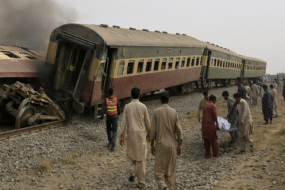A series of devastating earthquakes struck Myanmar and Thailand on Friday, causing widespread destruction and panic across the region. According to state-run broadcaster MRTV, at least 144 people lost their lives, while 732 others were injured in the six tremors that shook the area. The most powerful quake, measuring 7.7 in magnitude, hit at 12:50 PM (local time) and was strong enough to be felt in parts of China, Vietnam, Bangladesh, and India.
The World Health Organization has activated its emergency response system, while India has also stepped forward to offer aid. Prime Minister Narendra Modi expressed concern over the disaster in a social media post on X, stating, “Concerned by the situation in the wake of the Earthquake in Myanmar and Thailand. Praying for the safety and well-being of everyone. India stands ready to offer all possible assistance. In this regard, asked our authorities to be on standby. Also asked the MEA to remain in touch with the Governments of Myanmar and Thailand.”
Is India at Risk of an Earthquake?
Following the massive quake in Myanmar, tremors were reported in India’s northeastern region. The National Centre for Seismology recorded a 4.0 magnitude earthquake in Meghalaya at 1:03 PM on Friday, followed by a 4.3 magnitude tremor in Manipur at 1:29 PM.
Experts note that the Myanmar earthquakes were particularly destructive because they occurred at a shallow depth, meaning the energy was released closer to the Earth’s surface. Shallow quakes tend to cause more structural damage, similar to the one that shook Delhi in the early hours of February 17.
While it’s difficult to predict if India will experience a significant earthquake following the Myanmar disaster, seismologists warn that the northeastern states—Assam, Meghalaya, Nagaland, and Manipur—are particularly vulnerable. These regions sit near the boundary of the Indo-Australian and Eurasian tectonic plates, making them prone to seismic activity.
As the situation unfolds, authorities are closely monitoring aftershocks and potential risks, urging residents in high-risk areas to remain vigilant.





